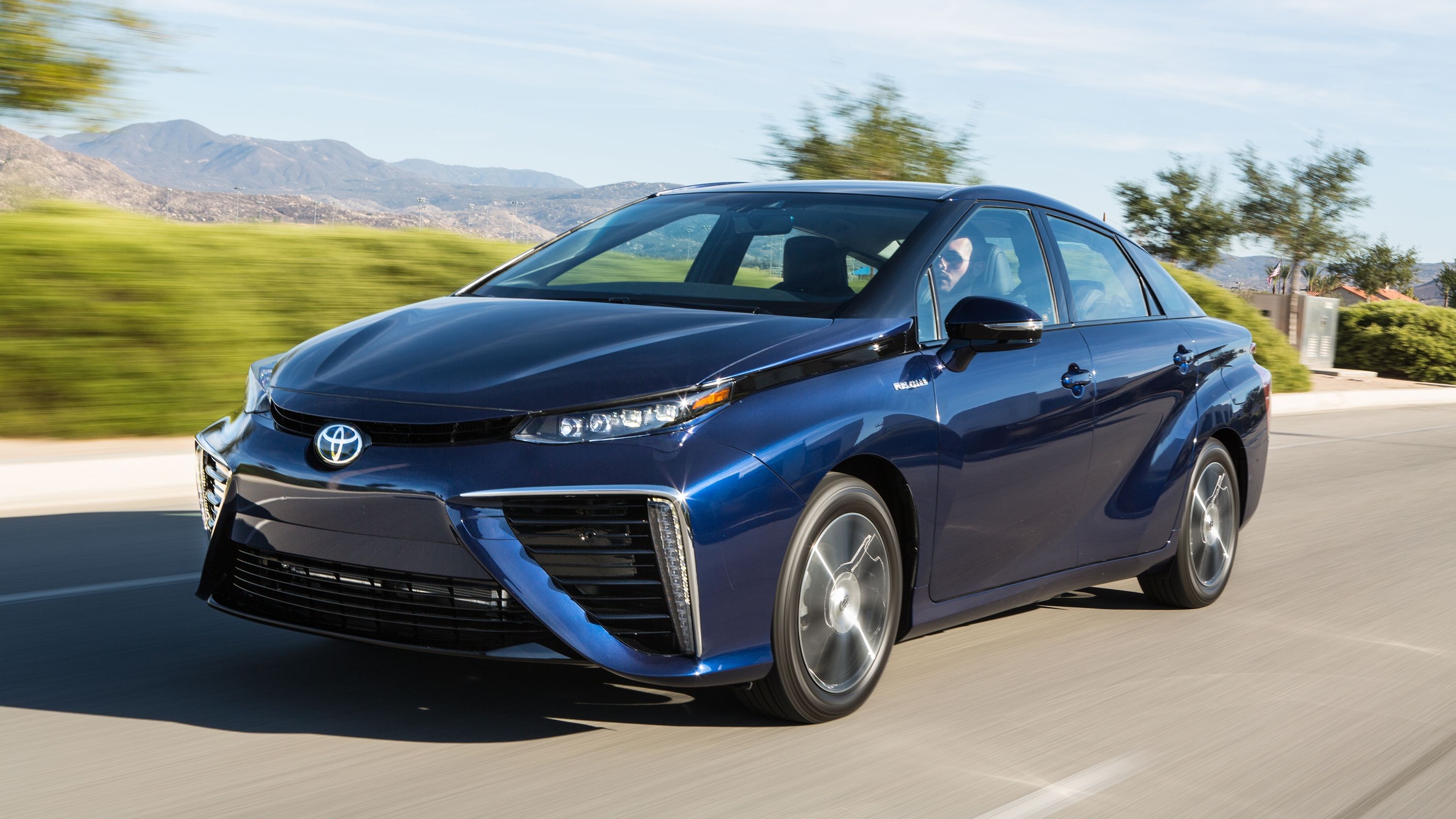In just a few short days, California-based customers looking to get in the world’s first purchasable, mass-produced hydrogen fuel-cell->ke4483 vehicle (FCV) will be able to place their orders for a new 2016 Toyota Mirai. The Mirai->ke4985 will only be available in California for its initial U.S. launch.
Toyota->ke88 will charge $57,500 to buy each Mirai outright, but says that price may rise slightly with increased shipping costs for 2016 models. Leasing comes in at $499 per month for 36 month, plus $3,649 due at lease signing. Toyota will give customers three years of free H2 fuel, up to a $15,000 maximum, or whichever comes first. California customers will also be eligible for a $5,000 state rebate, as well as a sticker that permits single-passenger carpool-lane driving. Federal incentives could drive the price lower, but Toyota must first persuade the government to bring back its H2 program that expired in December.
Prospective customers must undergo a screening process to determine their eligibility for Mirai ownership, which takes into account things like proximity to California’s hydrogen refueling station infrastructure and “various Mirai fit and driving preference questions.” There are currently only eight H2 refueling stations open in California, with another 48 in development. You can find a map of the stations here.
Each order must be placed online. Dealers will help interested buyers “explore” the sale and hand over the keys, but prospective buyers can’t purchase the Mirai from a dealership directly. Only one Mirai vehicle per customer is permitted.
And I thought Ferrari->ke252 was the only one that did this kind of stuff.
Toyota says it wants to sell only 3,000 Mirai models by the end of 2017, but adds it’ll build more in the years to come.
Continue reading for the full story.
Why it matters
Toyota likes to frame the Mirai as truly groundbreaking, and in many ways, it is. However, it’s not the first FCV on the scene. The 2015 Hyundai Tucson Fuel Cell and 2008 Honda FCX Clarity, for example, are both already available for lease, but neither allow outright purchase after the leasing period. Hyundai->ke201 charges $499 per month for three years for the Tucson,->ke3245 while Honda->ke34 charges $600 per month for the FCX.->ke2929 For that outlay, customers also receive free maintenance and fuel.
Still, Toyota is taking this launch carefully and slowly, which isn’t a surprise considering the newness of the technology. Furthermore, things must go smoothly if Toyo wants to champion H2 tech in the future, especially considering the automaker’s reputation for offering the latest green machines for the masses (the Prius->ke231 is the best example). That’s a rep Toyota definitely wants to maintain.
Deliveries begin in October at eight California dealerships. Each dealer was chosen based on several criteria, including ability to generate high volume sales for electrics->ke1030 and hybrids,->ke147 proximity to H2 refueling stations, available resources for upgrades to the sales and service departments, and proximity to the expected Mirai customer demographic. The current list of dealerships includes San Francisco Toyota, Roseville Toyota, Stevens Creek Toyota, Toyota of Sunnyvale, Longo Toyota, Toyota Santa Monica, Toyota of Orange and Tustin Toyota.
In an interview with Automotive News, Mike Sullivan, who runs Toyota Santa Monica, underlined just how crucial this product launch was for Toyota. With that in mind, Sullivan said he was focusing not on moving Mirai units, but rather providing the best possible customer experience. That includes picking the right customers. “We're going to turn people down if this isn't the car for you,” he said.
To find the right early adopters, interested customers must first start with an online questionnaire that lets them select their preferred dealer, learn about the nearest refueling stations, and pick their desired paint color.
Next, a Toyota representative contacts the prospective customer for a phone interview in which the customer confirms the available eligibility information and asks any lingering questions. If approved, the customer has two weeks to contact an authorized dealer, sign the paperwork and make the deposit. Only then is the car built and shipped over.
Obviously, Toyota doesn’t want to take any chances. After all, the word Mirai is Japanese for “future,” and taking a look at the above-featured promo video, you can see just how important this model is to the make. It’s all starry-eyed fanfare, with grandiose claims about “redefining the future of mobility” and putting together a “vision that could change the world.” The video goes on to say it’s searching for equally ambitious individuals to help bring this vision into reality, which is a bit dramatic considering customers are just driving the thing, but hey, that’s where we are in the industry.
Customers who are deemed ineligible but still want a Mirai are placed on a waiting list.
Looking past the California-only launch, Toyota has a partnership with the French company Air Liquide to build H2 stations in the Northeast beginning next year, with locations in New York, New Jersey, Connecticut, Massachusetts and Rhode Island, possibly hinting at future market availability outside the Golden State.
The Power-On Demand configuration, which allows the Mirai to be used as a mobile generator to power electric devices and even a home, will be made available late next year.
Compared to all-electric cars, FCVs offer higher range and faster refueling times. However, FCVs are quite expensive and there is limited support in terms of infrastructure. You can check out a full breakdown of the tech here.
2016 Toyota Mirai
Read our full review here.

